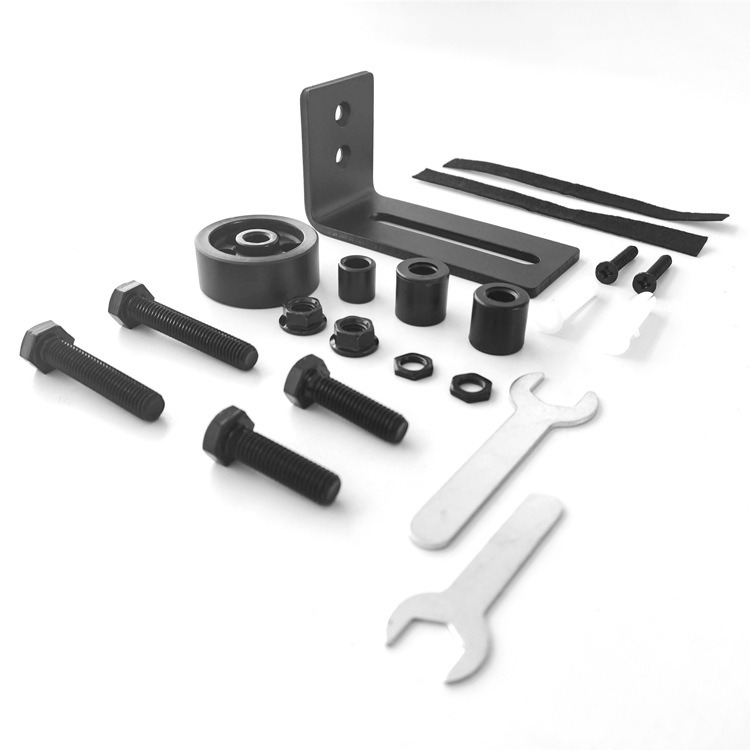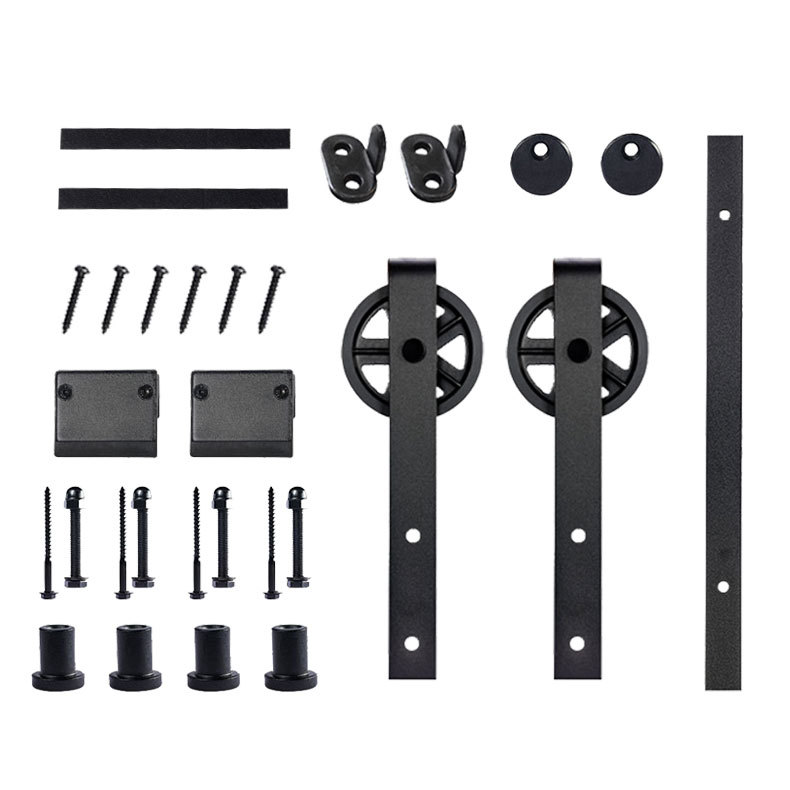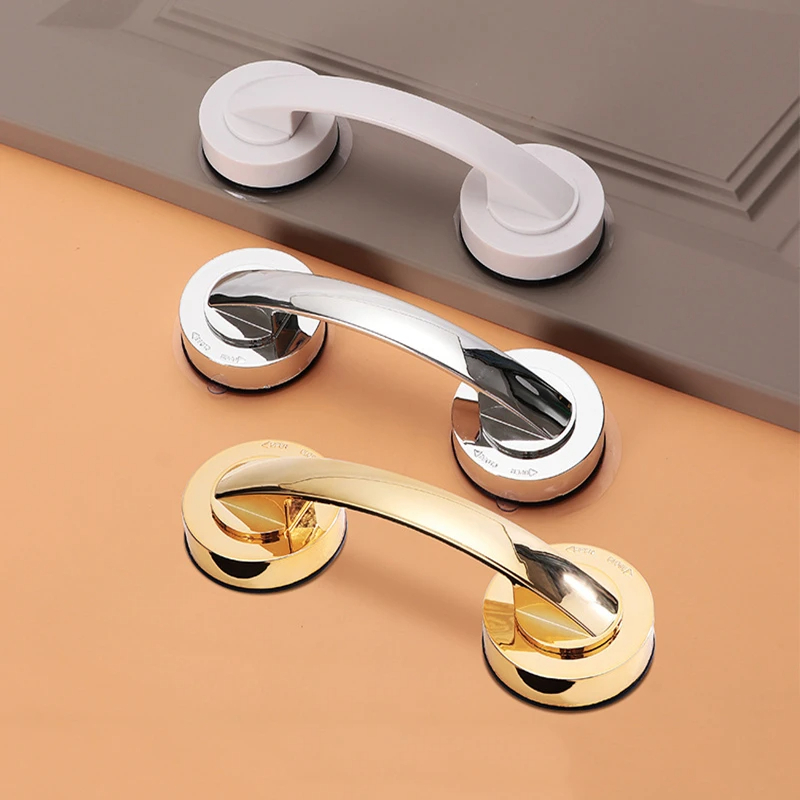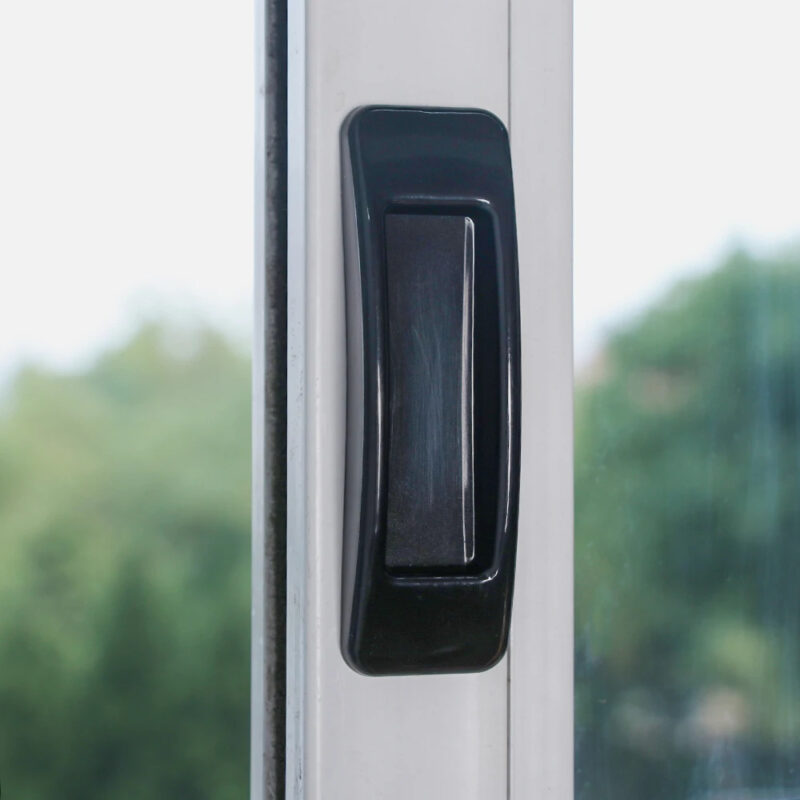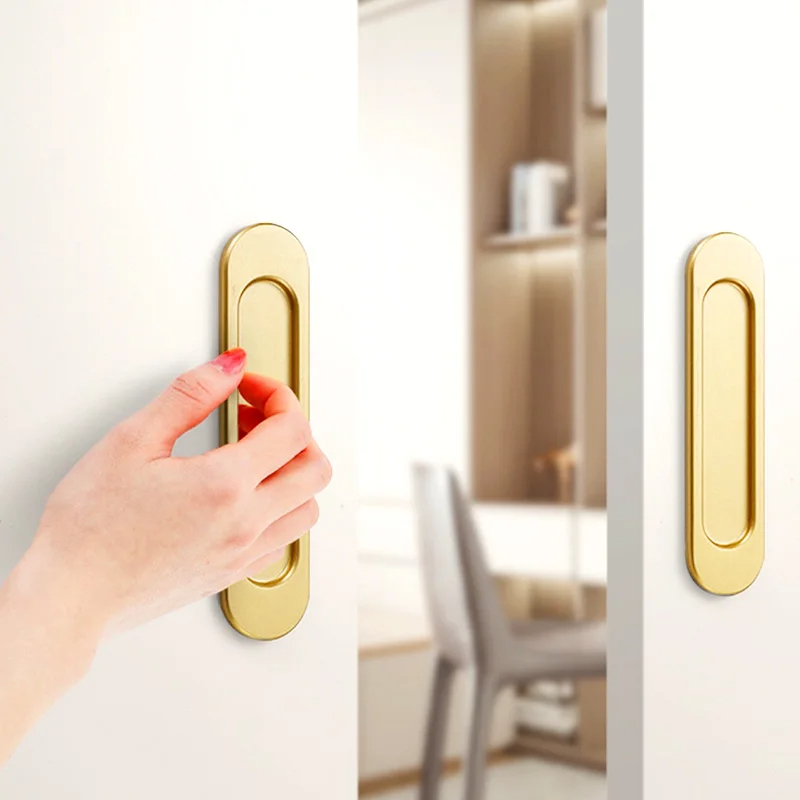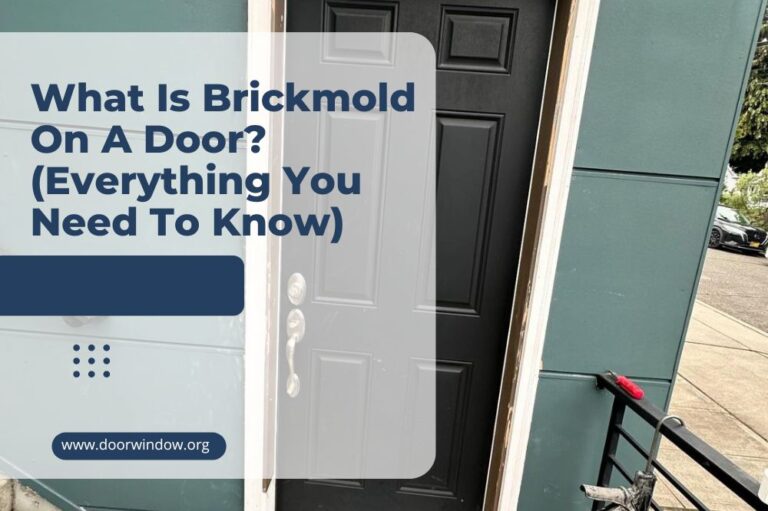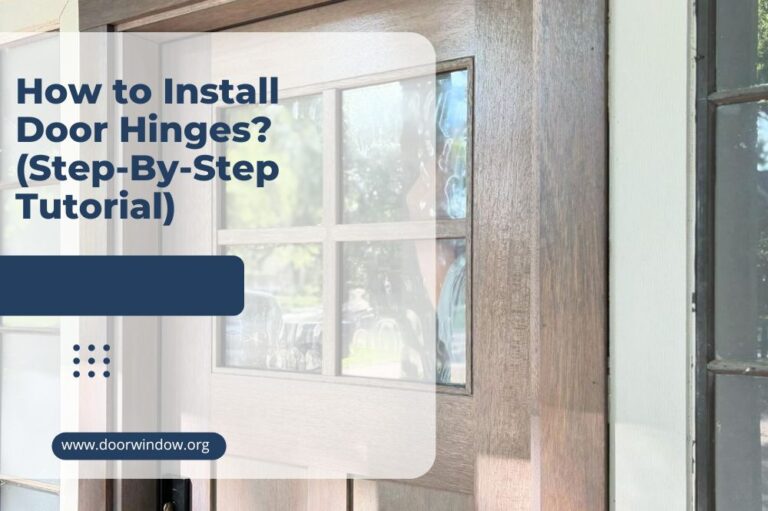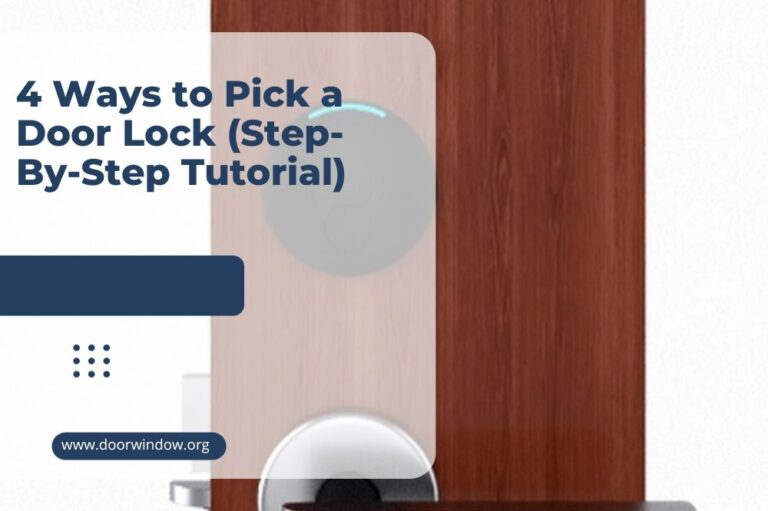How To Prevent Water Intrusion On Sliding Glass Doors? (Step-By-Step Guide)
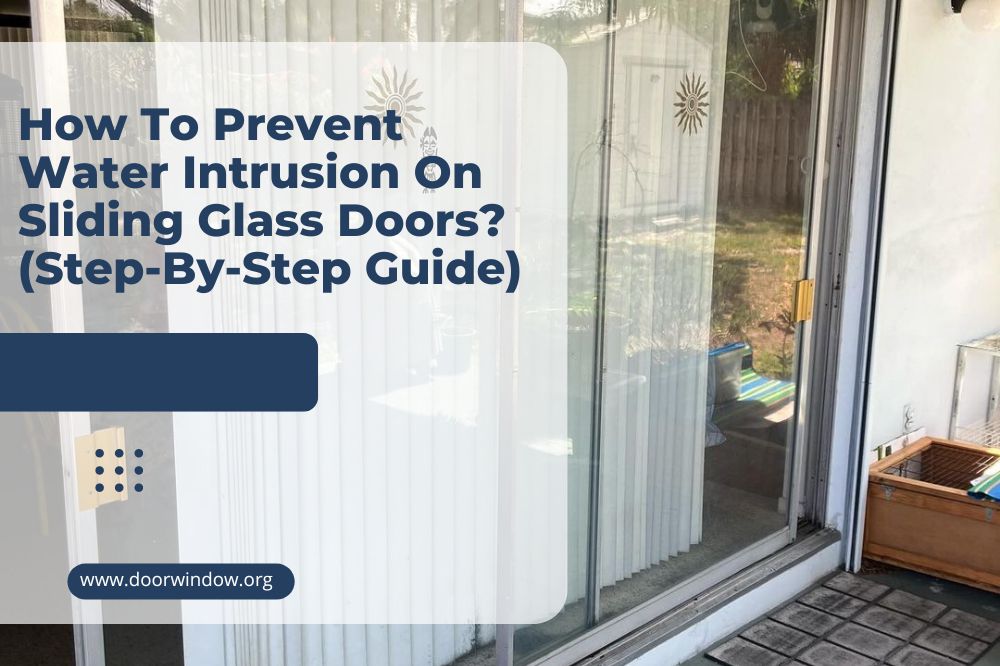
Sliding glass doors provide sophistication and beauty in a house that nothing else can. And that is part of the reason many homeowners install them. But the view and beauty will mean nothing if there is water intrusion on the sliding glass doors, especially if your floor is made of wood.
Areas that experience rainstorms may also experience high water intrusion rates. If you have glass patio doors, you may need to lose the view and beauty of the openness that comes from having such a house design. Sometimes, that means installing other practical doors that keep the water out.
Replacing glass doors with other door types can be inconvenient and expensive. Fortunately, there are other solutions. There are ways to check and fix the problem of leaky doors to prevent water intrusion, and this article explains the steps.
Steps to Prevent Water Intrusion in Your Sliding Glass Doors
There are several steps involved in preventing this problem. While you may want to dive into stopping the flow of water into your home through the doors, it does not solve the problem if you do not find out why the water leaks into the house.
Step One: Find Out Why There Is a Leak
This step involves determining the problem’s nature; this is the first thing to do because it helps you get to the source. To do this, you may have to wait for heavy rainfall to see where the leak is worst. You can also track other leak points, whether small or big, and check to see if the frames seal properly.
Then, you can check how the doors work to understand their nature, you might not have ever observed how the heavy glass fits into the metal frames and moves on the metal or plastic rollers. A clear understanding of how the glass doors work will go a long way to help you learn more about why there is a leak.
You can also check the metal tracks on which the doors run; they may be filled with water after every rainfall. If that is the case, you must determine whether or not there is weatherstripping and if it still works. Additionally, ensure the doors sit well in the tracks and there is no debris in them.
Step Two: Fix the Problem
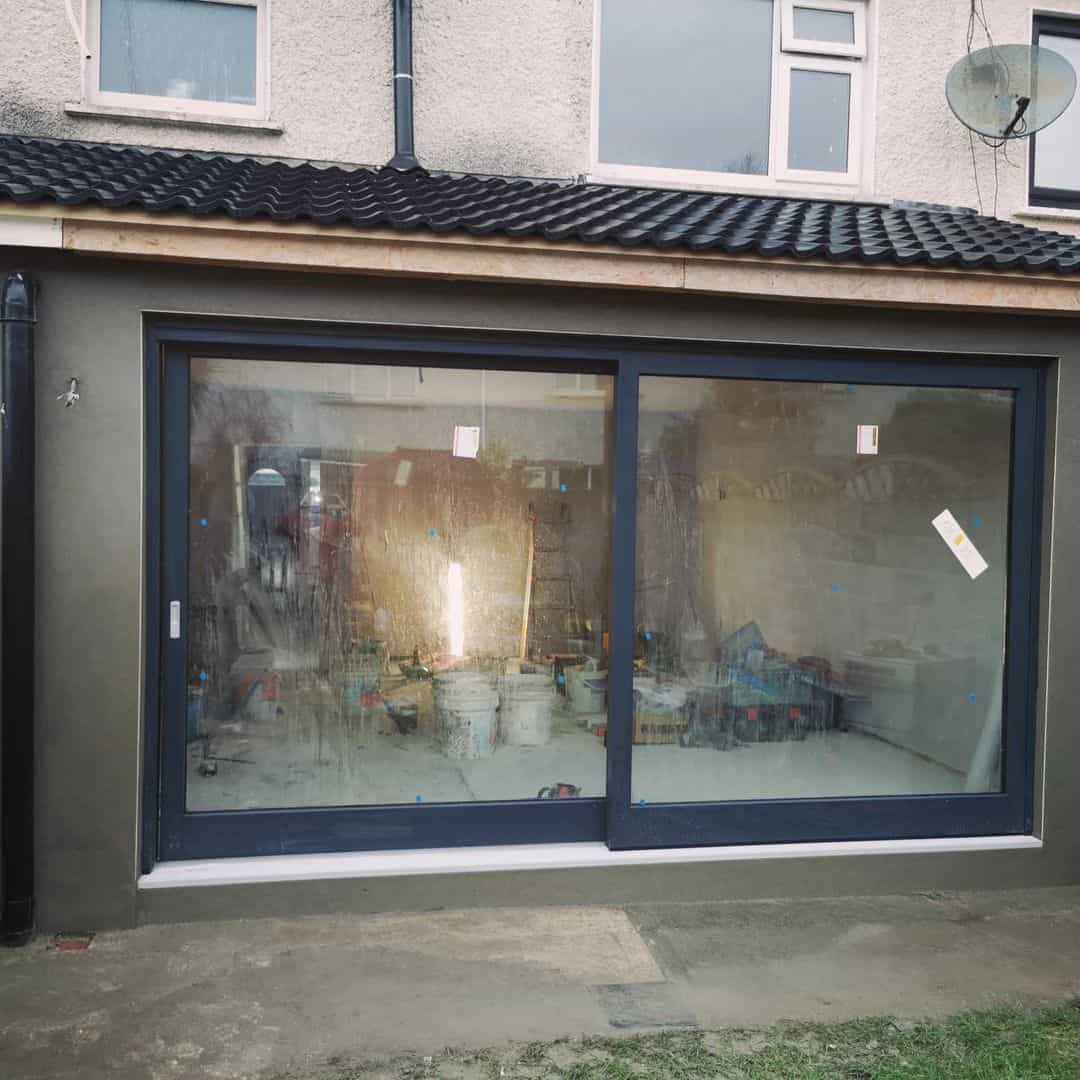
Several steps under this step complete the process of fixing the problem. After thoroughly checking the doors to see how it works, you will need to troubleshoot further to find easy ways to fix the problem.
i. Check the Frame
The first thing to do in this step is to check the door frame. This is particularly true if the door is old. Another possible reason for this problem is if the sliding doors are poorly installed. There may be a gap between the frames and supporting walls that allow water into the house.
If that is the case, you will need extensive repairs or have the installation company redo the job for a token. If it is an old house, you may have to speak with the seller because of the cost implication. Otherwise, you may have to find other means of sealing the gaps, such as using a water-resistant sealant.
ii. Balance the Doors
Another part to check is the doors and how they balance in the tacks. Sometimes, years of opening and closing get them misaligned over time. As with the first step, this troubleshooting step will require professional assistance, which means you may have to pay for the services.
However, if you have the skills to check the balance yourself, it will save you money. Whatever the case, you must find out if the water intrusion is from the lack of balance on the doors or from another area.
Ensure the gliders function properly and the doors roll without any friction or resistance. If you have trouble closing the doors, it will affect how much water they keep out of the house.
iii. Clean the Threshold Track
There are tracks inside the top and bottom of the metal frames holding the doors. The rollers move inside them when you open or close the doors. The threshold track is the one at the bottom of the door; over time, dirt and debris accumulate in it.
While this is the normal order of things, the buildup of debris will eventually impede how well the door moves and seals. It will form jams in the base track and keep the door from properly sealing. And if that happens, there will be significant water intrusion through the glass doors.
Therefore, get your vacuum and attach a narrow crevice tool that can fit into the tracks and remove the dirt, especially from the weep holes. Use the tool to suck up the debris and clear the tracks of grime, dust, and dirt. Go a step further to wipe leftover dirt using a moist rag or paper towel if the tool does not perform a thorough job.
iv. Install a New Threshold Track
If there are no gaps between the frames and walls, and the doors are properly balanced, the next thing to do is to clean the threshold track. However, cleaning the tracks does not always fix the sealing problem.
So, even after doing a thorough job of removing dirt from the sliding door track, you may find that there is still a water intrusion problem. In such a case, you may need to install a replacement sliding track because the old one may be tired and worn out from years of constant use.
To do this, you will have to lift the glass doors up and off the frames and set them aside. Next, loosen and detach the old track from the frame and discard it. Then, install the new one in its place and replace the doors in the tracks. This job may be best performed by a professional installation company for the best results. That is unless you have the skills and training for it.
Preventing water intrusion is not the only perk of installing new tracks, whether or not it is the threshold track. Gaps in the doors interfere with the temperature in the room. So, you can improve the temperature and cut off air leakage with a tighter seal, while keeping moisture out.
v. Adjust the Door Rollers
The best time to check the rollers or wheels that move the doors on the tracks is while replacing the tracks. Take the time to inspect them to ensure they are balanced enough to keep the doors on track. A lack of proper balance can create friction if there is not enough tension to move the rollers.
Besides, constant water leakage into the tracks or house will eventually cause rust and impede the smooth movement of the doors. The best way to check the roller adjustment is to open one sliding door slightly and check the gap at the top and bottom.
If the gaps are not equal, and you notice that one part is slightly wider or narrower than the other part, you must adjust the roller adjustment screw on the defective part. To do this, you will need a small screwdriver that can fit into the screw and comfortably turn it.
Turning the screws will either lift or lower the door. Turn the adjustment screw clockwise to lower the door or turn it counterclockwise to raise it. That means turning it to the right to lower it and to the left to raise it. Afterward, test the door to see how well it moves and seals.
Step Three: Improve the Weatherstripping

Your sliding glass doors may already have some weatherstripping. Sometimes, you may not need it, especially if you do not live in a hurricane-prone or storm area. Proper installation of the doors should be adequate to keep water from leaking into the house.
However, adding weather stripping to the mix can reduce the risk of water intrusion over a long period of usage. As the doors and accompanying parts begin to wear out, it becomes necessary to ensure proper protection against the elements.
In light of this, add weatherstripping or improve what is already there to reinforce the seal around the doors. The entire door jamb should be sealed with one continuous strip of foam tape or rubber tube.
The same rule applies to the bottom and top parts of the doors because they are most prone to leakage. The weatherstripping material should compress when you close the doors; this validates proper sealing.
Why Sliding Doors Leak

A poor installation job or a cost-saving technique on your part or that of the contractor usually leads to leakage. Apart from age, which can wear the parts down and compromise the seal, trying to save costs can cause water damage to your house because of leaking sliding doors.
Proper caulking can prevent this problem when it is airtight. But if the sliding doors are the inferior type, the best caulking job will not keep the water out of the house. The bottom line is to invest in the best sliding doors for flood and rain-prone areas. Also, use an experienced contractor for the job.
Final Words
Water intrusion issues are some of the banes of using sliding glass doors, although the beauty and view usually trump the consideration of this issue. However, there are a few steps that can help with keeping the water out, and this article explains what to do in detail.
Fixing these doors is usually an extensive and detailed project. So, it may be best to use the services of a professional contractor. If you already know what to do, it also helps to have someone with the requisite training supervise your work for the best results.

